1. Introduction
Jpa is a set of ORM specifications
hibernate is not just an ORM framework Provides implementation of JPA
JPA (Java Persistence API): java persistence API
2. Common annotations
2.1 @ Entity
marks the current class as an entity class and will be mapped to the specified database table
@Entity
public class Users {
}2.2 @Table
is generally annotated together with @Entity Use, if the database table name and class name are consistent, it is okay not to use the @Table annotation,
Otherwise, you need to use the @Table annotation to specify the table name
@Entity
@Table(name="t_users")
public class Users {
}2.3 @Id, @GeneratedValue, @SequenceGenerator, @Column
2.3.1 @Id
is used to map the attributes of the entity class to the primary key
2.3.2 @ GeneratedValue
Specify the primary key generation strategy
package javax.persistence;
/**
* 策略类型
*/
public enum GenerationType {
/**
* 通过表产生主键,框架借由表模拟序列产生主键,使用该策略可以使应用更易于数据库移植
*/
TABLE,
/**
* 通过序列产生主键,通过 @SequenceGenerator 注解指定序列名
* MySql 不支持这种方式
* Oracle 支持
*/
SEQUENCE,
/**
* 采用数据库 ID自增长的方式来自增主键字段
* Oracle 不支持这种方式;
*/
IDENTITY,
/**
* 缺省值,JPA 根据数据库自动选择
*/
AUTO;
private GenerationType() {
}
}2.3.3 @SequenceGenerator
2.3.4 @Column
When the entity class attribute name and the database column name are inconsistent This annotation must be used
@Entity
@Table(name="t_users")
public class Users {
@Id
@Column(name = "user_id")
@GeneratedValue(strategy = GenerationType.SEQUENCE, generator = "user_seq")
@SequenceGenerator(name = "user_seq", sequenceName = "user_seq")
private Long userId;
}2.4 @Transient
Indicates that the current attribute does not need to be mapped to the database
2.5 @Temproal
Mainly for Date type attributes Use, you can specify the precision of the time through this annotation
@Entity
@Table(name="t_users")
public class Users {
@Temporal(TemporalType.DATE)
private Date time1;
@Temporal(TemporalType.TIME)
private Date time2;
@Temporal(TemporalType.TIMESTAMP)
private Date time3;
}3. EntityManagerFactory
is similar to hibernate's SessionFactory
4. Four types of EntityManager entities Status
New status: The new creation does not yet have a persistent primary keyPersistence status: Already has a persistent primary key and has established a context relationship with persistence Free state: Has a persistent primary key, but has no context relationship with persistence Deletion state: Has a persistent primary key, and has a context relationship with persistence, but has been deleted from the database
4.1 find(Class entityClass, Object primaryKey)
Similar to get() of session in hibernate
find will return null if no query is found
4.2 getReference(Class entityClass, Object primaryKey)
Similar to the load() of session in hibernate
Only when the attributes in the object are actually obtained, the query will be executed. sql statement, getReference() just returns a proxy object
getReference will not return null if it is not queried, and will throw EntityNotFoundException
Note: Using this method may A lazy loading exception occurs, that is, we have not yet obtained the attribute value in the entity class, and the EntityManager has been closed as a result.
4.3 persist
Similar to Save() of session in hibernate
Note: The object passed in when executing the method cannot set the primary key value and an exception will be thrown
4.4 remove
Similar to delete() of session in hibernate
Note: This method can only delete persistent objects, but not free objects (hibernate can)
/**
* 删除游离态(失败)
*/
public void testRemove(){
Users user = new Users();
Users.setUserId(1);
entityManager.remove(customer);
}
/**
* 删除持久化状态(成功)
*/
public void testRemove(){
Users user = entityManager.find(Users.class, 1);
entityManager.remove(user);
}4.5 merge(T entity)
Similar to saveOrUpdate() in session in hibernate
// 新建状态
public void testMerge (){
Users user= new Users();
// 省略一系列的set
// user.set.....
Users newUser = entityManager.merge(user);
// user.getUserId() == null ==> true
// newUser.getUserId() == null ==> false
}
4.6 flush()
Similar to flush() in session in hibernate
Save all unsaved entities in the context to the database
4.6 refresh()
Similar to session refresh() in hibernate
Refresh the attribute values of all entities
5. EntityTransaction
EntityManager.getTransaction()
5.1 begin
5.2 commit
5.3 rollback
6. Mapping relationship
6.1 One-way one-to-many
Take the relationship between users and orders as an example. A user has multiple orders, and one order only belongs to one user
For a pair When inserting multiple relationships, whether the many side or the one side is inserted first, an additional update statement will be generated, because the many side will not insert the foreign key column during the insert
/**
* 订单和用户是多对一的关系
*/
@Entity
@Table(name="t_order")
public class Order {
// lazy为懒加载,默认为eager立即查询
@ManyToOne(fetch=FetchType.Lazy)
// @JoinColumn标注字段是一个类,userId为该类的主键
@JoinColumn(name="user_id")
private Users user;
}6.2 One-way Many-to-one
Take the relationship between users and orders as an example. A user has multiple orders, and an order only belongs to one user
For inserts in a many-to-one relationship, it is best to first The end that saves one and then the end that saves many.
If you save the many end first and then the one end, in order to maintain the foreign key relationship, you need to perform additional update operations on the many end
/**
* 订单和用户是多对一的关系
*/
@Entity
@Table(name="t_order")
public class Order {
// lazy为懒加载,默认为eager立即查询
@ManyToOne(fetch=FetchType.Lazy)
// @JoinColumn标注字段是一个类,userId为该类的主键
@JoinColumn(name="user_id")
private Users user;
}6.3 Two-way many-to-one
Take the relationship between users and orders as an example. A user has multiple orders, and an order only belongs to one user.
Two-way many-to-one is a combination of the above two, using @OneToMany and @ManyToOne
/**
* 用户和订单是一对多的关系
*/
@Entity
@Table(name="t_users")
public class User {
// 如果两侧都要描述关联关系的话,维护关联关系的任务要交给多的一方
// 使用 @OneToMany 了 mappedBy 的代表不维护关联关系,也就是不会产生额外的update语句
// @OneToMany 和 @JoinColumn 不能同时使用会报错
@OneToMany(mappedBy="user")
private Set<Orders> orders;
}
/**
* 订单和用户是多对一的关系
*/
@Entity
@Table(name="t_orders")
public class Order {
// lazy为懒加载,默认为eager立即查询
@ManyToOne(fetch=FetchType.Lazy)
// @JoinColumn标注字段是一个类,userId为该类的主键
@JoinColumn(name="user_id")
private Users user;
}
6.4 双向一对一
以学校和校长之间的关系为例,一个学校只有一个校长,一个校长也只属于一个学校
一方使用 @OneToMany + @JoinColumn,另一方使用 @OneToOne(mappedBy=“xx”)
具体由哪一方维护关联关系都可以,这里我们以学校一端维护关联关系为例
保存时先保存不维护关联关系的一方(也就是使用@OneToOne(mappedBy=“xx”)的一方),否则会产生额外的 update 语句
/**
* 学校
*/
@Entity
@Table(name="t_school")
public class School {
// 默认为eager立即查询
@OneToOne
// 添加唯一约束
@JoinColumn(name="school_master_id", unique = true)
private SchoolMaster schoolMaster;
}
/**
* 校长
*/
@Entity
@Table(name="t_school_master")
public class SchoolMaster {
// 不维护关联关系要使用 mappedBy
@OneToOne(mappedBy="schoolMaster")
private School school;
}6.5 双向多对多
以学生和课程之间的关系为例,一个学生可以选多门课,一个课程也有多个学生,多对多需要一个中间表,也就是选课表
维护关联关系的一方需要使用 @JoinTable
关联关系也是只有一方维护即可,这里我们由学生表进行维护
/**
* 学生
*/
@Entity
@Table(name="t_student")
public class Student {
@GeneratedValue
@Id
private Long student_id;
// 要使用 set 集合接收
// 默认为lazy懒加载
@ManyToMany
// name 为中间表的表名
@JoinTable(name="t_student_choose_course",
// name 为与中间表与当前表所关联的字段的名称,referencedColumnName 为当前表中与中间表关联的字段的名称
joinColumns={@JoinColumn(name="student_id", referencedColumnName="student_id")},
// name 为与中间表与多对多另一方表所关联的字段的名称,referencedColumnName 为多对多另一方与中间表关联的字段的名称
inverseJoinColumns={@JoinColumn(name="course_id", referencedColumnName="course_id")})
private Set<Course> courses;
}
/**
* 课程
*/
@Entity
@Table(name="t_course")
public class Course {
@GeneratedValue
@Id
private Long course_id;
// 要使用 set 集合接收
// 默认为lazy懒加载
@ManyToMany(mappedBy="courses")
private Set<Student> students;
}7. 二级缓存
开启了二级缓存之后,缓存是可以跨越 EntityManager 的,
默认是一级缓存也就是在一个 EntityManager 中是有缓存的
二级缓存可以实现,关闭了 EntityManager 之后缓存不会被清除
使用 @Cacheable(true) 开启二级缓存
8. JPQL
8.1 查询接口
8.1.1 createQuery
public void testCreateQuery(){
// 这里我们使用了一个 new Student,因为我们是查询 Student 中的部分属性,如果不适用 new Student 查询返回的结果就不是 Student 类型而是一个 Object[] 类型的 List
// 也可以在实体类中创建对应的构造器,然后使用如下这种 new Student 的方式,来把返回结果封装为Student 对象
String jpql = "SELECT new Student(s.name, s.age) FROM t_student s WHERE s.student_id > ?";
// setParameter 时下标是从1开始的
List result = entityManager.createQuery(jpql).setParameter(1, 1).getResultList();
}8.1.2 createNamedQuery
需要在类上使用 @NamedQuery 注解,事先声明 sql 语句
@NamedQuery(name="testNamedQuery", query="select * from t_student WHERE student_id = ?")
@Entity
@Table(name="t_student")
public class Student {
@GeneratedValue
@Id
private Long student_id;
@Column
private String name;
@Column
private int age;
} public void testCreateNamedQuery(){
Query query = entityManager.createNamedQuery("testNamedQuery").setParameter(1, 3);
Student student = (Student) query.getSingleResult();
}8.1.3 createNativeQuery
public void testCreateNativeQuery(){
// 本地sql的意思是只能在数据库中执行的sql语句
String sql = "SELECT age FROM t_student WHERE student_id = ?";
Query query = entityManager.createNativeQuery(sql).setParameter(1, 18);
Object result = query.getSingleResult();
}8.2 关联查询
存在一对多关系时,当我们查询一的一端时,默认多的一端是懒加载。此时我们如果想要一次性查询出所有的数据就需要使用关联查询
注意: 下面 sql 中的重点就是要加上 fetch u.orders,表示要查询出用户所关联的所有订单
public void testLeftOuterJoinFetch(){
String jpql = "FROM t_users u LEFT OUTER JOIN FETCH u.orders WHERE u.id = ?";
Users user = (Users) entityManager.createQuery(jpql).setParameter(1, 123).getSingleResult();
}The above is the detailed content of How to use SpringBoot JPA common annotations. For more information, please follow other related articles on the PHP Chinese website!
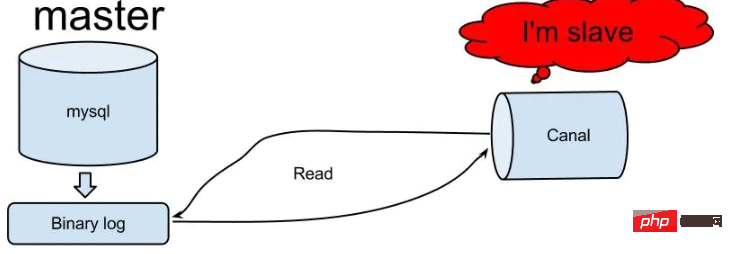 怎么使用SpringBoot+Canal实现数据库实时监控May 10, 2023 pm 06:25 PM
怎么使用SpringBoot+Canal实现数据库实时监控May 10, 2023 pm 06:25 PMCanal工作原理Canal模拟MySQLslave的交互协议,伪装自己为MySQLslave,向MySQLmaster发送dump协议MySQLmaster收到dump请求,开始推送binarylog给slave(也就是Canal)Canal解析binarylog对象(原始为byte流)MySQL打开binlog模式在MySQL配置文件my.cnf设置如下信息:[mysqld]#打开binloglog-bin=mysql-bin#选择ROW(行)模式binlog-format=ROW#配置My
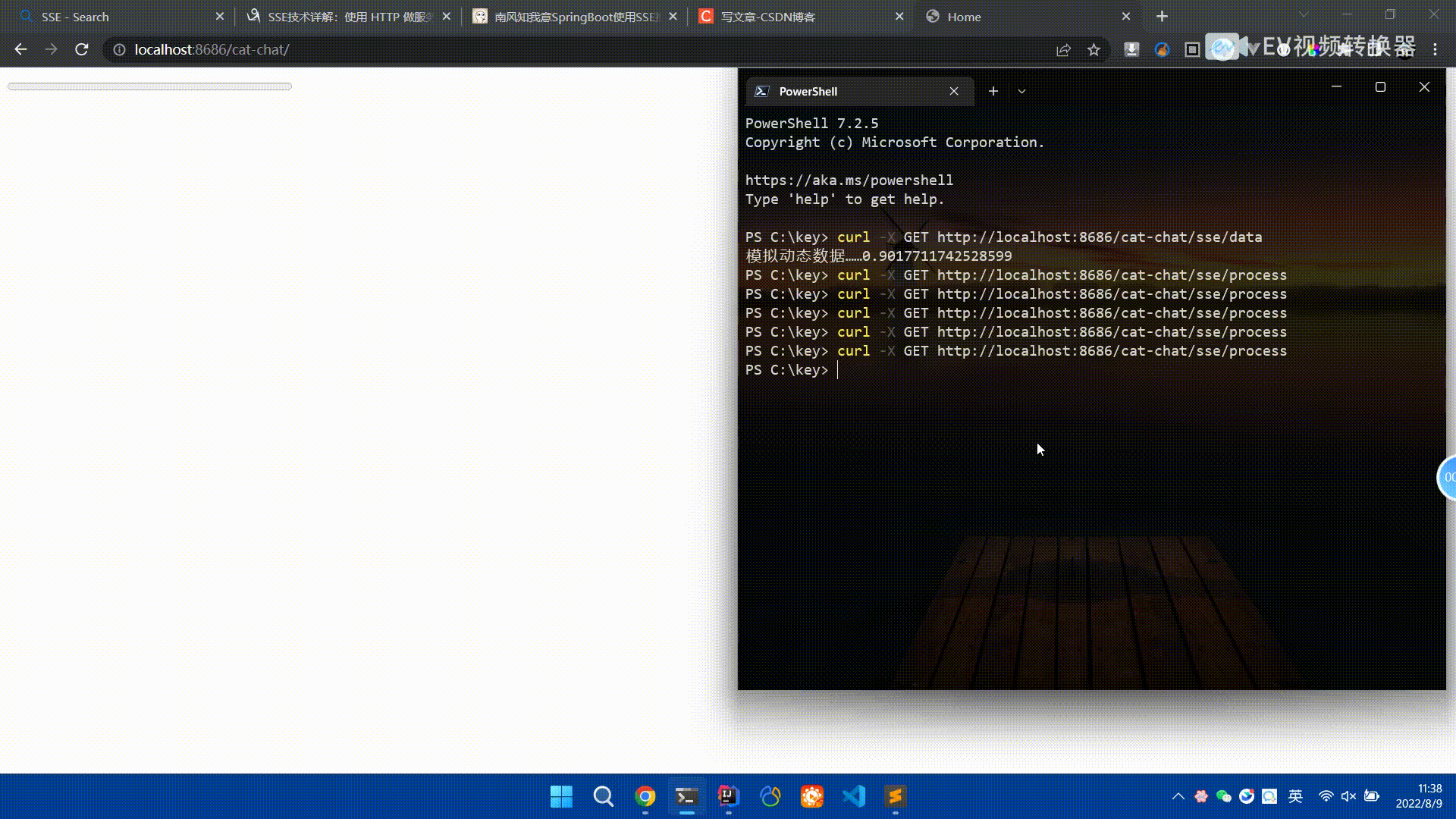 Spring Boot怎么使用SSE方式向前端推送数据May 10, 2023 pm 05:31 PM
Spring Boot怎么使用SSE方式向前端推送数据May 10, 2023 pm 05:31 PM前言SSE简单的来说就是服务器主动向前端推送数据的一种技术,它是单向的,也就是说前端是不能向服务器发送数据的。SSE适用于消息推送,监控等只需要服务器推送数据的场景中,下面是使用SpringBoot来实现一个简单的模拟向前端推动进度数据,前端页面接受后展示进度条。服务端在SpringBoot中使用时需要注意,最好使用SpringWeb提供的SseEmitter这个类来进行操作,我在刚开始时使用网上说的将Content-Type设置为text-stream这种方式发现每次前端每次都会重新创建接。最
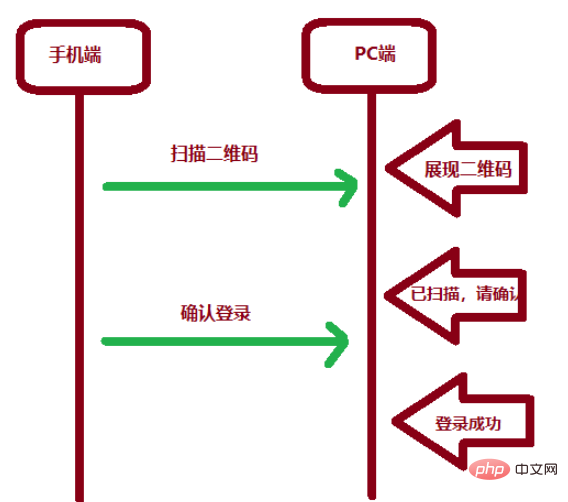 SpringBoot怎么实现二维码扫码登录May 10, 2023 pm 08:25 PM
SpringBoot怎么实现二维码扫码登录May 10, 2023 pm 08:25 PM一、手机扫二维码登录的原理二维码扫码登录是一种基于OAuth3.0协议的授权登录方式。在这种方式下,应用程序不需要获取用户的用户名和密码,只需要获取用户的授权即可。二维码扫码登录主要有以下几个步骤:应用程序生成一个二维码,并将该二维码展示给用户。用户使用扫码工具扫描该二维码,并在授权页面中授权。用户授权后,应用程序会获取一个授权码。应用程序使用该授权码向授权服务器请求访问令牌。授权服务器返回一个访问令牌给应用程序。应用程序使用该访问令牌访问资源服务器。通过以上步骤,二维码扫码登录可以实现用户的快
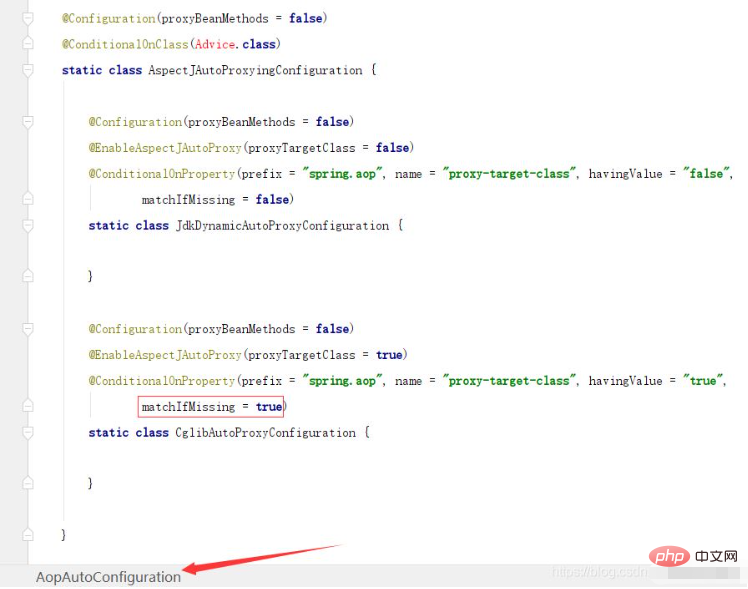 SpringBoot/Spring AOP默认动态代理方式是什么May 10, 2023 pm 03:52 PM
SpringBoot/Spring AOP默认动态代理方式是什么May 10, 2023 pm 03:52 PM1.springboot2.x及以上版本在SpringBoot2.xAOP中会默认使用Cglib来实现,但是Spring5中默认还是使用jdk动态代理。SpringAOP默认使用JDK动态代理,如果对象没有实现接口,则使用CGLIB代理。当然,也可以强制使用CGLIB代理。在SpringBoot中,通过AopAutoConfiguration来自动装配AOP.2.Springboot1.xSpringboot1.xAOP默认还是使用JDK动态代理的3.SpringBoot2.x为何默认使用Cgl
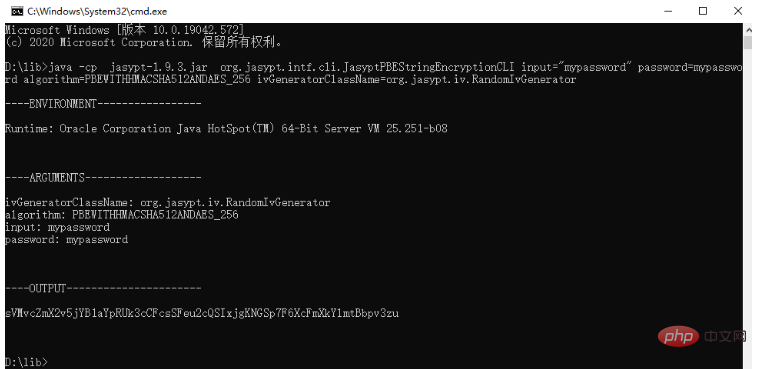 spring boot怎么对敏感信息进行加解密May 10, 2023 pm 02:46 PM
spring boot怎么对敏感信息进行加解密May 10, 2023 pm 02:46 PM我们使用jasypt最新版本对敏感信息进行加解密。1.在项目pom文件中加入如下依赖:com.github.ulisesbocchiojasypt-spring-boot-starter3.0.32.创建加解密公用类:packagecom.myproject.common.utils;importorg.jasypt.encryption.pbe.PooledPBEStringEncryptor;importorg.jasypt.encryption.pbe.config.SimpleStrin
 使用Java SpringBoot集成POI实现Word文档导出Apr 21, 2023 pm 12:19 PM
使用Java SpringBoot集成POI实现Word文档导出Apr 21, 2023 pm 12:19 PM知识准备需要理解ApachePOI遵循的标准(OfficeOpenXML(OOXML)标准和微软的OLE2复合文档格式(OLE2)),这将对应着API的依赖包。什么是POIApachePOI是用Java编写的免费开源的跨平台的JavaAPI,ApachePOI提供API给Java程序对MicrosoftOffice格式档案读和写的功能。POI为“PoorObfuscationImplementation”的首字母缩写,意为“简洁版的模糊实现”。ApachePOI是创建和维护操作各种符合Offic
 springboot怎么整合shiro实现多验证登录功能May 10, 2023 pm 04:19 PM
springboot怎么整合shiro实现多验证登录功能May 10, 2023 pm 04:19 PM1.首先新建一个shiroConfigshiro的配置类,代码如下:@ConfigurationpublicclassSpringShiroConfig{/***@paramrealms这儿使用接口集合是为了实现多验证登录时使用的*@return*/@BeanpublicSecurityManagersecurityManager(Collectionrealms){DefaultWebSecurityManagersManager=newDefaultWebSecurityManager();
 SpringBoot项目打包发布到外部tomcat遇到的问题怎么解决May 10, 2023 pm 05:49 PM
SpringBoot项目打包发布到外部tomcat遇到的问题怎么解决May 10, 2023 pm 05:49 PM先说遇到问题的情景:初次尝试使用springboot框架写了个小web项目,在IntellijIDEA中能正常启动运行。使用maven运行install,生成war包,发布到本机的tomcat下,出现异常,主要的异常信息是.......LifeCycleException。经各种搜索,找到答案。springboot因为内嵌tomcat容器,所以可以通过打包为jar包的方法将项目发布,但是如何将springboot项目打包成可发布到tomcat中的war包项目呢?1.既然需要打包成war包项目,首


Hot AI Tools

Undresser.AI Undress
AI-powered app for creating realistic nude photos

AI Clothes Remover
Online AI tool for removing clothes from photos.

Undress AI Tool
Undress images for free

Clothoff.io
AI clothes remover

AI Hentai Generator
Generate AI Hentai for free.

Hot Article

Hot Tools

SublimeText3 English version
Recommended: Win version, supports code prompts!

DVWA
Damn Vulnerable Web App (DVWA) is a PHP/MySQL web application that is very vulnerable. Its main goals are to be an aid for security professionals to test their skills and tools in a legal environment, to help web developers better understand the process of securing web applications, and to help teachers/students teach/learn in a classroom environment Web application security. The goal of DVWA is to practice some of the most common web vulnerabilities through a simple and straightforward interface, with varying degrees of difficulty. Please note that this software

mPDF
mPDF is a PHP library that can generate PDF files from UTF-8 encoded HTML. The original author, Ian Back, wrote mPDF to output PDF files "on the fly" from his website and handle different languages. It is slower than original scripts like HTML2FPDF and produces larger files when using Unicode fonts, but supports CSS styles etc. and has a lot of enhancements. Supports almost all languages, including RTL (Arabic and Hebrew) and CJK (Chinese, Japanese and Korean). Supports nested block-level elements (such as P, DIV),

Notepad++7.3.1
Easy-to-use and free code editor

PhpStorm Mac version
The latest (2018.2.1) professional PHP integrated development tool







